Managing IT assets presents a challenge for any business. Small business owners must balance the time invested in researching and procuring their technology while ensuring day-to-day operations run smoothly. Enterprise-level businesses must procure, deploy, and manage numerous devices that support their extensive network. Failure to effectively utilize IT assets can lead to decreased productivity and increased operational costs, impacting business competitiveness and potentially leading to closure.
You need a plan to improve IT asset utilization and better manage your business’s technology lifecycle. This plan is called IT lifecycle management, which is a comprehensive strategy that businesses create to establish how IT assets are procured, deployed, maintained, and disposed of.
What is IT Lifecycle Management?
IT lifecycle management optimizes the lifespan and use of IT assets within a business to meet personalized goals and metrics. As a living process, this strategy can adapt over time to improve scalability, budget, security, and other priorities identified by the business. Successful IT lifecycle management follows an asset from the earliest stages of procurement until it’s decommissioned and disposed of.
While IT assets are often considered as hardware technology, it’s important to also account for software, operating systems, and licenses. By taking this holistic approach to asset management, a business can gather metrics on the effectiveness of its technology, implement best practices to ensure device optimization, and foresee challenges that arise due to an IT asset’s lifespan.
IT Lifecycle Management Process
The details of each company’s IT lifecycle management process will differ, but they all have at least four key steps:
- Procurement
- Deployment
- Maintenance
- Disposal
The best-fit IT asset management plan for your business will consider these four steps and build policies and procedures that further address the unique aspects of your IT environment!
1. IT Procurement
IT asset procurement begins well before any quotes are received or products purchased. Strong procurement involves identifying the pain points technology can alleviate and the operational needs that demand new tech. Then, researching devices that can meet those needs and offer value to the employees who use them.
Along with operational needs, it is best practice to consider:
- Vendors: Finding the right vendor is essential to procuring reliable technology. A business must plan how to select potential technology suppliers, field quotes, negotiate for the best pricing, and build a relationship with their vendor.
- Integration: Even the best IT assets can still hamper business operations if they don’t integrate well with existing systems and employees. An IT department can identify the technical aspects of new technology. Still, it’s equally important to find devices employees are ready to use or identify the training needed for deployment and implementation.
- Budget: Technology costs can vary wildly for both SMBs and enterprise businesses. Knowing how much money to spend per device can help narrow the search for the right assets or reveal the need to investigate alternatives. For example, a company could procure 2-n-1 devices rather than purchasing a laptop and tablet for every employee.
Procurement is a critical first step in IT lifecycle management. Identifying technical requirements and reputable vendors early on helps build the roadmap for how your technology will function until it is decommissioned. There is no such thing as planning too much at this stage. We recommend working with an IT consultant to gather additional insight and have access to IT professionals who can help manage vendors and find the best-fit technology for your needs.
2. Deployment
After new IT assets arrive at the office, the next stage of IT lifecycle management begins: deployment. Devices need to be put to use quickly to maximize their value for the business. This makes it critical to plan where they need to go and how to put them into service or employees’ hands effectively.
If an enterprise needs to replace the switches at a sensitive location, can that site handle the downtime? Exploring options for managing server downtime, addressing security gaps, and ensuring quick installation can significantly minimize operational disruptions.
Additionally, it is essential to support employees with the training they need to use new devices. Especially for small businesses, employees must know how their devices work and how their previous workflows have changed. Rolling out new devices in phases can help alleviate employee stress while allowing the team managing IT assets to allocate the proper resources to deployment and training.
Tip: Working with an IT consultant who specializes in your new technology can streamline your IT asset deployment. A consultant can use their experience to bring new insights into your unique environment and relieve pressure on IT staff at critical points in deployment!
3. Management/Maintenance
Once new IT assets are positioned for practical use, the maintenance phase of your IT lifecycle management plan begins. At this stage, the business must account for the wear and tear, user error, and general maintenance/monitoring new IT assets will require while in use.
Employees need to be mindful of the maintenance their hardware requires for optimal functionality. Businesses can significantly benefit from scheduling regular software updates. The IT staff should proactively plan to replace devices that employees accidentally break and provide substitutes to minimize downtime.
Management and maintenance of IT assets must include implementing ways to monitor device and network technology’s performance. XDR solutions automatically collect detailed network behavior and suspicious activity data while presenting this information to IT staff in straightforward alerts and analytics. XDR allows a business to monitor endpoints, email servers, and cloud environments to ensure IT assets perform optimally and catch malicious activity within the network early.
Businesses must prioritize finding the most suitable XDR solutions for their specific needs and collaborate with an IT consultant for training and deployment guidance. Other solutions that help monitor activity and secure devices include:
- Endpoint protection
- Next-generation firewalls
- Multifactor authentication (MFA)
Additional measures a business can take to better manage and maintain its IT environment include identifying vulnerabilities and planning for device end-of-life maintenance. Even with regular patching, device software can be vulnerable to exploits. By tracking the vulnerabilities relevant to your environment, IT staff can strategically monitor the environment for signs of malicious activity and plan for remediation.
Threat factors can compound near a device’s end of life, and this means IT staff may need to take special measures to protect assets as they move toward decommissioning. Your business can balance security and efficiency throughout a device’s life cycle with detailed monitoring and regular maintenance.
4. Decommissioning/Disposal
IT assets can reach their end of life when hardware is no longer supported, new code versions aren’t being developed, or new technology takes a device’s place. At this stage of IT lifecycle management, proper disposal becomes paramount. Businesses want to consider tracking device end-of-life, have policies for handling data on decommissioned devices, and create a plan for disposing of old hardware.
A single end-of-life device in an environment can offer malicious actors access to the business’ network or hinder numerous workflows when it malfunctions. For this reason, SMB owners and IT departments must have a system for tracking how close every device on the network is to its end-of-life date.
Even if a device’s hardware is still serviced, it can be considered at the end of its life if it no longer receives software updates, leaving it vulnerable to new threats. For instance, an ASA with a component that blocks software updates for another part can render the entire device obsolete.
Effective IT lifecycle management means your business has a plan for each device when it needs decommissioning. For many devices, this will simply be having an employee hand it in before wiping its data and disposing of it. Even in these cases, ensure the device’s company data has been backed up correctly so that no employee work is lost.
All remaining data must be completely erased in accordance with company policy or cybersecurity standards, such as those from the DoD or NIST. For network infrastructure assets, create a plan to transition devices that mitigates downtime and can occur during off hours.
Decommissioned devices can be donated to employees, sold to recoup costs, recycled, or disposed of by a professional company. The proper action depends heavily on the type of asset needing disposal, company budgets, and data security.
Providing IT as it Should Be
Effective IT lifecycle management strategies demand keen attention to detail and a company’s clear understanding of its priorities. This rigor makes them daunting but essential. Businesses looking to build their IT asset plans from the ground up should expect the process to require time, revisions, and many hard-learned lessons.
If you want an IT partner to help create the best strategy for you or an experienced eye to assist in revising your current plans, we’re here to help! Our engineers have years of experience providing our IT services to businesses ranging from Fortune 500 companies to SMBs.
Schedule your complimentary consultation with one of our engineers today!




